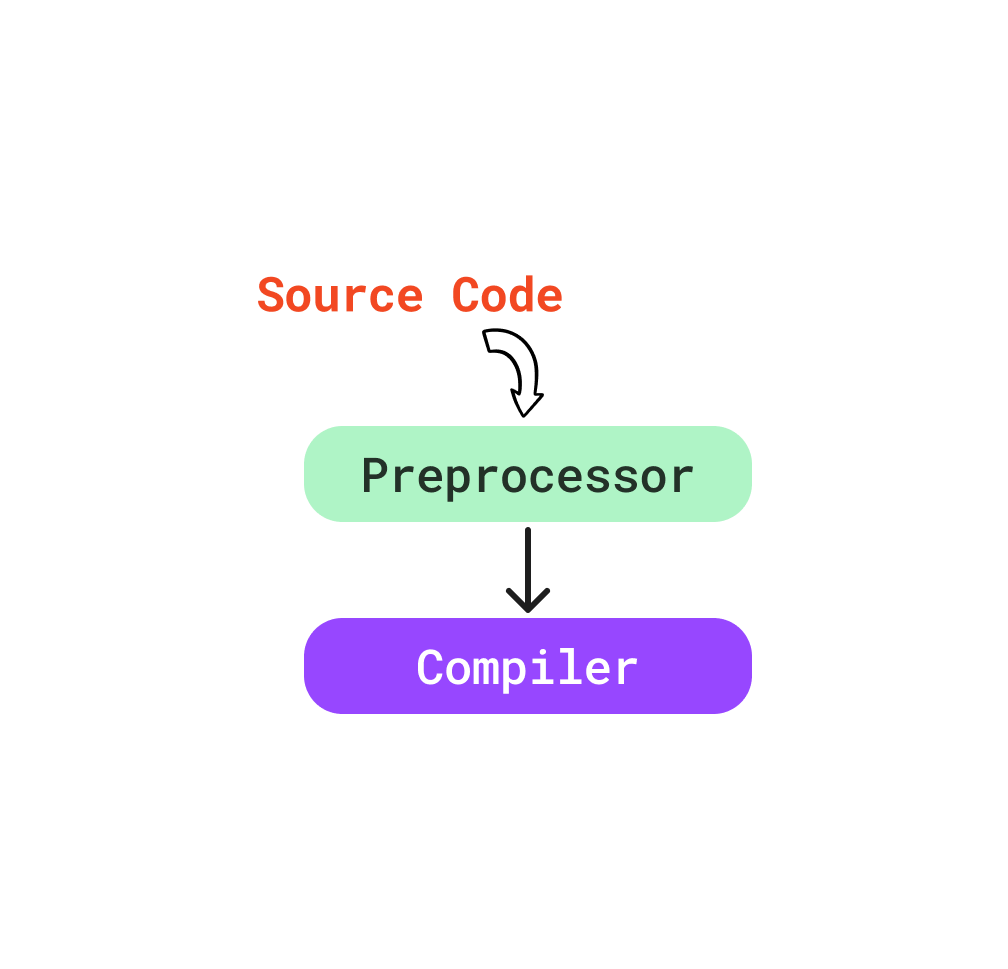The preprocessor directives are used to provide instructions to the compiler before the actual compilation of the code.
This component is used to include or exclude pieces of code in the program before compilation. The preprocessor directives start with a # symbol and tell the compiler how to handle certain pieces of code.
//before the compilation starts check if PI isn't defined
//then define PI
#ifndef PI
#define PI 3.14
#endif
//include file
#include <stdio.h>
The most common preprocessor directive in C is the #include directive, which is used to include header files or link libraries.
The Preprocessor
In the field of computer programming, the "C" programming language has a unique feature called the preprocessor. This sets "C" apart from other high-level programming languages that do not have this feature.
The preprocessor in "C" is a program that performs tasks before the source code is compiled into object code. Its main purpose is to manipulate the source code before it gets compiled, which can offer several advantages to the programmer.

One of the benefits of using the preprocessor is that it can enhance the readability of the program. By performing tasks such as macro expansion and conditional compilation, the preprocessor can simplify the code and make it easier to understand. This can save time for the programmer by reducing the amount of code they need to write and making the code more concise.
Another advantage of using the preprocessor is that it can facilitate program modification. By using preprocessor directives, the programmer can define variables, include files, and even perform computations at compile time. This can make it easier to change the code in the future, as the programmer can make modifications in one place and have them applied throughout the code.
Additionally, using the preprocessor can improve the portability and efficiency of the program. By using preprocessor directives, the programmer can make the code platform-independent, meaning it can run on different computer systems without modification. The preprocessor can also optimize the code by performing tasks such as loop unrolling, which can make the program run faster and use less memory.
The preprocessor reads the source code and performs various tasks based on the directives. By using preprocessor directives, programmers can write more modular, maintainable, and efficient code.
However, preprocessor directives should be used with caution, as they can make code difficult to read and maintain if used excessively or incorrectly.
info
Preprocessor directives are special instructions that tell the computer to do some special things before it runs the program you wrote. They are like a set of rules that help the computer understand your program better.
For example, if you want to use a function that is not in your program, you can use a preprocessor directive to tell the computer where to find that function. Or if you want to make a shortcut for a long piece of code, you can define a macro using a preprocessor directive.
The most common preprocessor directive is the #include directive, which is used to include header files in the source code.
Header files contain declarations for functions, variables, and other symbols that are defined in other source files or libraries.
The following code includes the standard input/output header file, which contains declarations for functions like printf() and scanf().
Another common preprocessor directive is the #define directive, which is used to define macros. Macros are short, reusable code snippets that can be substituted for longer code.
#define MAX(a, b) ((a) > (b) ? (a) : (b))
This macro can be used like a function call in the source code, like this
int max_value = MAX(10, 20);
After preprocessing, the code will be transformed to:
int max_value = ((10) > (20) ? (10) : (20));
Preprocessor directives can also be used for conditional compilation, which allows different parts of the code to be compiled depending on certain conditions. The #ifdef and #ifndef directives are used to test whether a macro has been defined or not.
#ifndef PI
#define PI 3.14
#endif
Preprocessor directives can be used to perform other tasks, such as controlling the alignment of data in memory, setting compiler options, and generating code automatically.